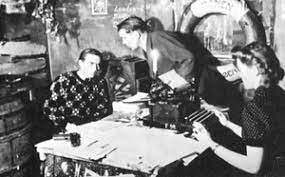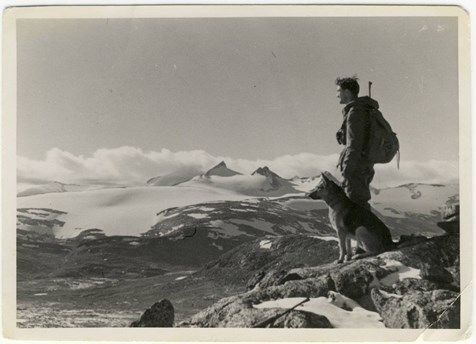Introduction to the Norwegian Resistance during WW2, Part III</a#x3E;
 The Norwegian Resistance is taking shape
The Norwegian Resistance is taking shape Part II of this blog series on the Norwegian Resistance ended with Reichskommissar Terboven’s speech of 25 September 1940, which heralded a new phase in the resistance movement.
The Norwegian fascist Quisling felt invigorated by the Nazis’ clear goal to break the Norwegian spirit, which was the aim of Terboven’s speech. The traitor hoped Norway would make peace with Germany and then he’d form his national government and that government would take part in the European New Order: Hitler’s Third Reich.
Now Norway was at the brink of being sold out, the nation’s pride and indignation was triggered. Just what they needed after the general paralysis since the invasion of 10 April.
Political activity from other parties than the Nasjonal Samling were forbidden, the free press was muzzled and suddenly the advocates of what was called ‘Norway’s New Era’ were everywhere. The war outlook was gloomy, now all Allied military resistance on the Continent had been crushed and even Britain was under German attack (the Blitz).
Yet, what Quisling had miscalculated was that he still was as unpopular with the people of Norway as he’d been before the war (in 1936 his party had 1.84 percent of the votes; at the height of his power in 1943 this was about double but still only a small percentage of the population).
Quisling’s treasonable action on 9 April combined with Terboven’s speech made the people aware of the danger they were facing.
If Quisling were to achieve his political goal, he would be able to make peace with Germany and send the youth of the country to war on the enemy’s side. To prevent this was the principal object of resistance, the red thread in every phase of the struggle almost to the last day of the war. (Tore Gjelsvik - Norwegian Resistance 1940-1945, p.34)

Norwegian resistance fighter in the area between Norway and Sweden
The struggle had not yet started on a national level, not was it led by a central command. People from every class and district began to withstand the NS (Nasjonal Samling) pressure individually and collectively. The struggle in the first phase of the war had many faces and various forms.
NOTE: I have personally - in my research into resistance movements in other European countries - not come across another country that has kept striving for central organization and command of their resistance like the Norwegians. However, due to the vastness of their country, the ruthless and unrelenting attacks from both the Gestapo and Quisling’s national police, the government-in-exile in London AND the meddling of the British military, coordinating of both the civil and military struggle proved almost impossible. And yet the Norwegians managed to realize an almost unanimous and operational Home Front in 1944!
The Four Faces of ResistanceFirstly, there was open resistance to infiltration and control by both oppressors in big organizations and institutions. Secondly, the underground establishment of a free press to break the monopoly of public information took shape. Thirdly, secret maintenance funds were set up to help the families of people who were arrested or had to flee. Fourthly, the people’s morale was strengthened by calling out fraternization with the enemy and isolating these ‘traitors.’ This was done by wearing the H7 (the King’s monogram) and other emblems, cold-shouldering Nazis in public life and various strikes at theaters, cinemas and sports events.
Thus the Home Front slowly but steadily came into being. Stenciled newspapers were printed and the first civil resistance groups stood up.
To be continued….


